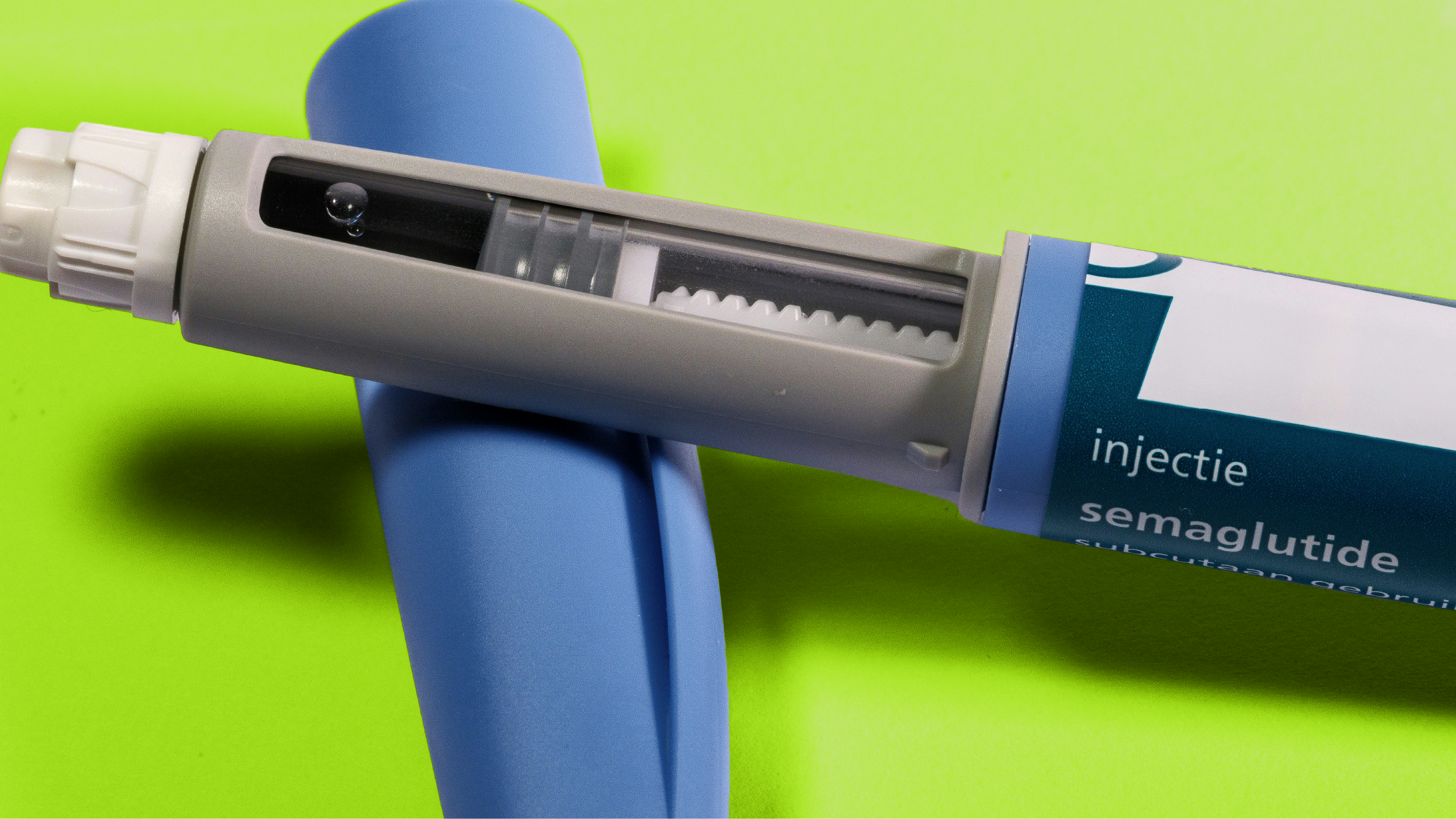Ozempic, Wegovy, Mounjaro—oh my! These medications, commonly known as GLP-1 receptor agonists, have gained widespread attention for their ability to help manage type 2 diabetes and support weight loss. In fact, 6% of the US population (about 1 in 16 people) are currently taking GLP-1 medications. While they are highly effective at controlling blood sugar and reducing appetite, they also come with an important consideration: the risk of muscle loss.
For individuals using GLP-1 medications, maintaining adequate protein intake is crucial. Protein plays a key role in preserving muscle mass, sustaining energy levels, and supporting overall health. However, due to the appetite-suppressing effects of GLP-1 drugs, many users struggle to consume enough protein. In fact, a recent study conducted by GNC found that 86% of GLP-1 users are not meeting their protein needs.
In this article, we’ll explore why protein is essential for GLP-1 users and how to ensure sufficient intake.
Why Protein Matters for GLP-1 Users
GLP-1 medications work by slowing digestion, increasing insulin sensitivity, and reducing hunger cues, leading to a natural decrease in food intake.1 While this can be beneficial for weight management, it also raises concerns about adequate nutrient consumption—especially protein.
Protein is essential for muscle maintenance, tissue repair, immune function, and overall metabolic health. Without enough protein, the body may break down muscle tissue for energy, leading to muscle loss, decreased strength, and lower metabolic efficiency.2 Given that GLP-1 users are already consuming fewer calories, prioritizing high-quality protein sources becomes even more critical.
The Risk of Muscle Loss on GLP-1 Medications
One of the unintended effects of weight loss on GLP-1s is the loss of not only fat but also lean muscle mass. Since muscle plays a vital role in metabolism and physical function, preserving it should be a top priority. Research suggests that individuals on GLP-1 medications may experience accelerated muscle loss compared to standard weight loss regimens.3 In fact, incretin therapies such as semaglutide (Ozempic & Wegovy) and tirzepatide (Mounjary & Zepbound) have been shown to result in similar if not greater muscle loss than several forms of cancer, with up to 13.9% lean mass reduction.4
However, in a separate study recently conducted by GNC, researchers found that only 35% of GLP-1 users were aware of the muscle loss side effects of these medications.
Since muscle tissue is more metabolically active than adipose tissue (fat), loss of muscle mass leads to a reduced metabolic rate. That means the body burns fewer calories at rest, so when an individual stops taking a GLP-1 drug, they are likely to gain back fat mass rather than lean (i.e. muscle) mass.
To counteract this, experts recommend increasing protein intake to support muscle retention. The general guideline when pursuing weight loss is to consume 1.0-1.5 grams of protein per kilogram of one's goal body weight (about 0.45-0.68g per pound).5 However, due to appetite suppression, users may need creative strategies to incorporate more protein into their diet.
How GLP-1 Users Can Meet Their Protein Needs
Since traditional protein sources may become less appealing due to reduced appetite, GLP-1 users should focus on protein-rich foods that are easy to consume in smaller portions. Some effective strategies include:
- Protein shakes and smoothies: Convenient and easy to digest, these beverages are becoming increasingly popular among GLP-1 users (+94% growth year-over-year, according to Tastewise).
- High-protein snacks: Options like protein bars, yogurt, and high-protein cereals offer an easy way to increase protein intake between meals.
- Meal fortification: Adding protein powder to oatmeal, soups, or even baked goods can help increase daily protein intake without requiring large meals.
Supporting GLP-1 Users with PURIS Pea Protein
At PURIS, we recognize the growing need for high-quality protein options that align with the evolving dietary habits of GLP-1 users. Our pea protein portfolio offers versatile solutions for a range of applications, including protein powders, bars, cereals, and snacks—helping consumers meet their protein needs without compromising on taste or convenience.
By prioritizing protein intake, GLP-1 users can maximize the benefits of their medications while maintaining muscle mass and overall well-being. With innovative solutions like PURIS Pea Protein, meeting daily protein needs has never been easier.
If you’re looking to develop products that cater to the increasing demand for protein among GLP-1 users, explore the benefits of PURIS Pea Protein. Learn more and request a sample today to formulate the next generation of high-protein, plant-based foods.
Sources:
- Hensley L. (2023, March 21). What's the Difference Between Ozempic, Wegovy, and Mounjaro? Verywell Health. https://www.verywellhealth.com/ozempic-vs-wegovy-vs-mounjaro-7368829
- Melkonian EA, Asuka E, Schury MP. Physiology, Gluconeogenesis. [Updated 2023 Nov 13]. In: StatPearls [Internet]. Treasure Island (FL): StatPearls Publishing. https://www.ncbi.nlm.nih.gov/books/NBK541119/
- Prado, C. M., Phillips, S. M., Gonzalez, M. C., & Heymsfield, S. B. (2024). Muscle matters: the effects of medically induced weight loss on skeletal muscle. The Lancet. Diabetes & Endocrinology, 12(11), 785–787. https://doi.org/10.1016/S2213-8587(24)00272-9
- Locatelli, João Carlos; Gonçalves Costa, Juliene; Haynes, Andrew; H. Naylor, Louise; Gerry Fegan, P.; B. Yeap, Bu; et al. (2024). Incretin-based weight loss pharmacotherapy: Can resistance exercise optimize changes in body composition?. American Diabetes Association. Figure. https://doi.org/10.2337/figshare.25483273.v1
- Cleveland Clinic. (2024, June 27). 4 Ways Protein Can Help You Shed Pounds. https://health.clevelandclinic.org/how-much-protein-to-eat-to-lose-weight




